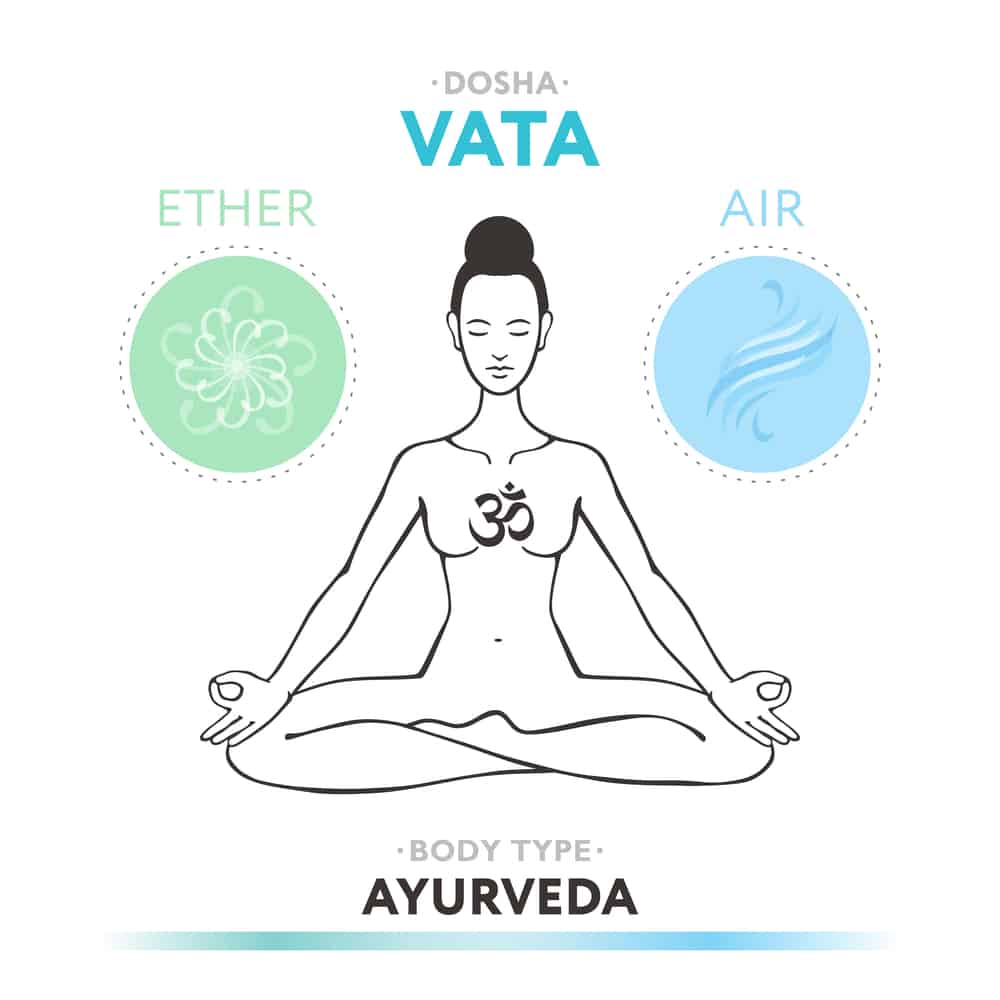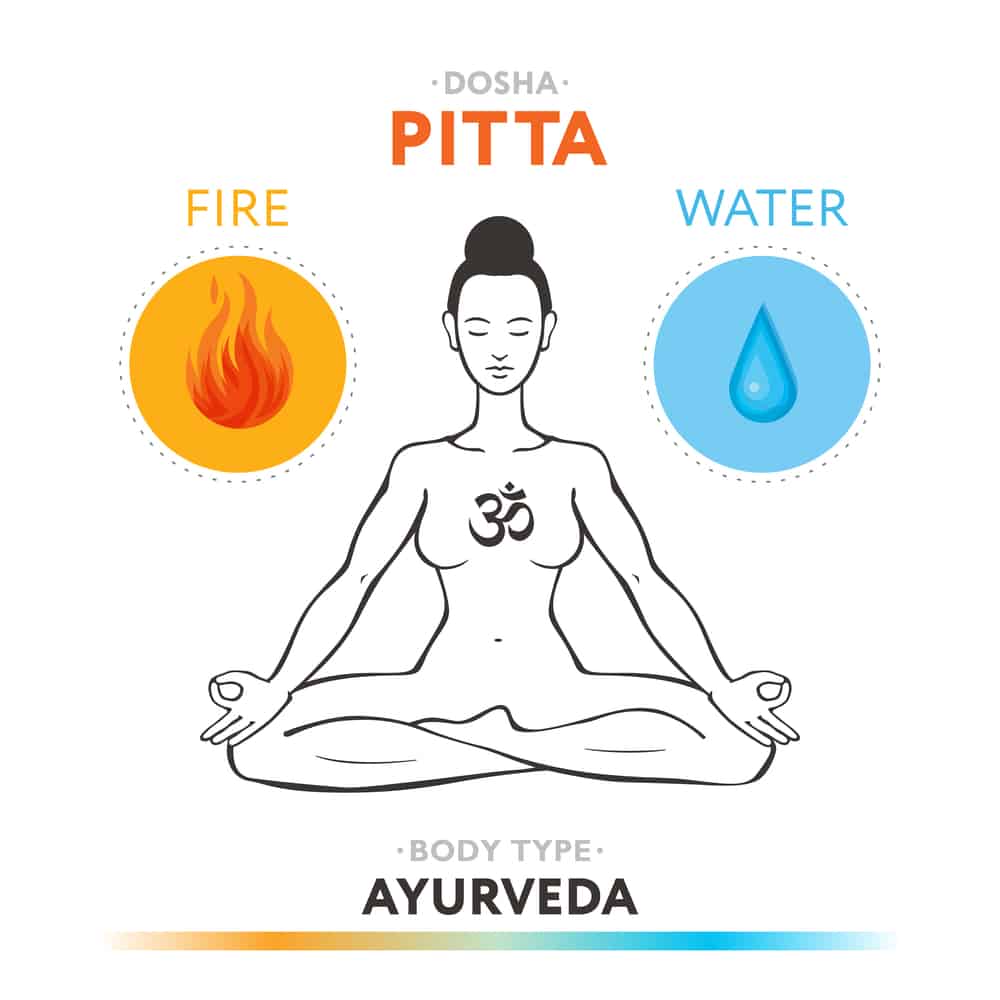
Ready for perfect health and well-being? Ayurveda is the way to go. Here’s an introduction to Ayurveda to kickstart a new lifestyle for perfect health and well-being.
An Introduction to Ayurveda
Ayurveda was developed more than 5,000 years ago in India and is one of the world’s oldest holistic body-mind-spirit healing system that offers us tools and practices to thrive in all aspects of our lives; spiritual, emotional, and physical.
These ancient tools and practices focus on balancing the body, mind, and spirit in alignment with nature through lifestyle, diet, exercise, yoga & meditation, cleansing, herbs, rest, and environment.
Ayurveda views every single person as an intelligent expression of life, perfectly healthy. And the main goal is to be in touch with that space of perfect health where body, mind, and spirit are perfectly balanced.
Ayurveda reminds us daily that we are an integral part of the Universe. We are composed of the very same substance that governs the entire Universe. Which means, there is no difference between our body (microcosm) and the Universe (macrocosm).
History of Ayurveda
The Sanskrit term Ayurveda derives from Ayur (life) and Veda (science or knowledge). Thus Ayurveda translates to “knowledge of life.”
Ayurveda originates from Ancient Eastern philosophies that describe reality’s nature and how we can use nature’s healing principles. It derives from a deep understanding of the eternal truths about the human body, mind & spirit.
Early literature provides evidence that Ayurveda evolved as a medical and philosophical tradition from the deep wisdom of spiritually enlightened prophets known as Rishis. They lived in the Himalayas in Northern India.
Their wisdom-encompassing Ayurveda, yoga, and meditation – was initially transmitted orally from teacher to disciple and later recorded in 4 sacred texts known as the Vedas:
The Rig Veda
Yajur Veda
Sam Veda
Atharva Veda
The Rig Veda contains philosophical verses on the nature of existence and information on the three fundamental human constitutions (doshas). The Rig Veda discusses rejuvenation and the use of herbs to heal the body and mind.
Atharva Veda contains information on subjects such as internal medicine, surgery, infertility, and psychiatry.
In the 1970s, Ayurveda teachers from India traveled to the United States and Europe to share their holistic health teaching.
Today there are Ayurvedic wellness centers, practitioners, and colleges all over the world.
The Eight Branches of Ayurveda:
- Kaaya Chikitsa (Internal Medicine)
- Baala Chikitsa (Treatment of Children / Pediatrics)
- Graha Chikitsa (Psychology)
- Urdhvaanga Chikitsa (Treatment of disease above the clavicle)
- Shalya Chikitsa (Surgery)
- Damstra Chikitsa (Toxicology)
- Vrsha Chikitsa (Aphrodisiac therapy)
- Jara Chikitsa (Rejuvenation)
More than an approach to treating illness, Ayurveda is a way of living.
We can use the practices of Ayurveda in our everyday lives to remember that perfect health is the delicate balance between our physical world, body, mind, and spirit.
The Doshas
Doshas is an essential part of Ayurveda. Similar to DNA, “Doshas” is the energy that makes up a person’s constitution.
According to Ayurveda, every single thing in the Universe is made up of energy, vibrations, consciousness. And everything you see, hear, touch, taste, and smell contain the five fundamental elements of nature – space, air, fire, water, and earth.
Each element has its unique vibrational frequency; density.
These five elements are everywhere and in everything, including you and me.
Every human being is born with the five elements present within him. However, every person has his unique combination and degree of these five elements.
Some people have more water elements present within their bodies, while others have more fire and earth elements.
Whenever a person has an excess of the elements of space and air, it creates Vata Dosha. A lot of fire and water makes Pitta dosha. And a ton of water and earth creates Kapha dosha.
Dosha refers to an imbalance because of the persistent dominance of a particular element.
Perfect balance is when all the five elements are equally proportioned within an individual; this, however, is very rare. Most people have a combination of the elements and doshas.

An Introduction to Ayurveda – Vata
Vata is the element if Air & Space and is the energy of movement.
Vata is the energy that drives:
- Breathing
- Blinking
- Muscle and tissue movement
- Pulsation of the heart
The qualities of Vata energy are:
- Dry
- Light
- Cold
- Rough
- Subtle
- Mobile
- Lucid
An excess of any of these qualities can spur an imbalance.
When Vata energy is in balance, it stimulates creativity and flexibility. When the energy of Vata is out of balance, it may result in fear and anxiety.
Continuous stimulations, such as drugs, alcohol, and sugar. Cold food and beverages. Loud environments. Constant traveling by airplane. And Cold weather can throw a Vata Person out of balance.
Common disorders of out-of-balance Vata:
- Tics
- Twitches
- Aching joints
- dry skin and hair
- Nerve disorders
- Constipation
- Mental Confusion
Characteristics of a Vata body type:
- Lightweight and thin build
- Performs activities fast
- Irregular hunger and digestion
- Insomnia; light interrupted sleep
- Enthusiastic; vibrant imagination
- Exiting, always changing moods
- Vata types grasp new information as quick as they forget them
- Tend to worry
- Constipation
- Easily fatigued
- Bursts of mental and physical energy
Positive Vata psychological traits:
- Imaginative
- Sensitive
- Spontaneous
- Strong
- Exciting
Vata types find it difficult to stay grounded. People with predominant Vata energy can balance and ground this moving energy with a healthy lifestyle and daily routines.
Ways to balance Vata energy:
- Stay warm
- Remain calm
- Avoid raw or cold and frozen foods
- Eat warm foods and spices
- Stay away from extreme cold
- Have a daily routine
- Get plenty of rest

An Introduction to Ayurveda – Pitta
Pitta is the element of Fire and Water and is the energy of digestion and metabolism.
Pitta is the energy that drives:
- Digestion
- Metabolism
- Nutrition
- Body temperature
The qualities of Pitta energy are:
- Oily
- Hot
- Light
- Dispersing
- Liquid
When Pitta energy is in balance, it stimulates understanding and intelligence. When the energy of Pitta is out of balance, it provokes anger, hatred, and jealousy.
Sunlight, heat, and intense physical activity can throw a Pitta person out of balance.
Common disorders of out-of-balance Pitta:
- Sunburns
- Skin rashes
- Acne
- Inflammation
- Fever
- Hot flashes
- Early balding
- Premature grey hair
- Excessive hunger and thirst
- Short-tempered
- Easily agitated
- Aggressive
Characteristics of a Pitta body type:
- Medium height and build
- Average strength and endurance
- Healthy digestion
- Fair or coppery skin, with freckles and moles
- Skin is warm and not so wrinkled
- Blond, light brown, or silky red hair
- Eyes are medium size
- The nose is sharp with a reddish tip.
Positive Pitta psychological traits:
- Sharp intellect
- Adventurous; loves a challenge
- Precise; articulate speech
- Confident
- Alert
- Intelligent
Ways to balance Pitta energy:
- Avoid excessive heat, steam baths, and exercising when its is hot
- Limited salt intake
- Cool, non-spicy food

An Introduction to Ayurveda – Kapha
Kapha is the element of Earth and Water and is the energy of lubrication.
Kapha is responsible for the body’s structure, such as the bones, muscles, and tendons. Kapha provides the substance that holds the cells together and supplies fluid to all the body parts and systems. It lubricates the joints, moisturizes the skin, and maintains immunity.
When Kapha energy is in balance, Kapha types are sweet, loving, calm, stable, grounded, and forgiving. But when out of balance, they can get very attached, greedy, envious, and possessive.
Common disorders of out-of-balance Kapha:
- Congestion
- Mucus discharge
- Heaviness
- Fluid retention
- Lethargy
- Oversleeping
- Depression
- Feeling sluggish in the morning
Kapha types are more likely to have diseases connected to the water principle, such as:
- Obesity(excess weight)
- Water retention
- Headaches
- Flu
- Congested sinuses
- Chest colds
- Painful joints
- Asthma
- Diabetes
- Digh cholesterol
Characteristics of a Kapha body type:
- Robust build
- Well-developed muscles with great physical strength and endurance.
- Cool, smooth, thick, pale, often oily skin.
- Eyes are large, attractive with thick, long lashes and brows.
- Slow to grasp new information, but with good long-term memory
- Heavy and deep prolonged sleep
- Slow metabolism with a tendency to gain weight quickly
- Slow digestive system
- Mild hunger
- Moderate perspiration
Positive Kapha psychological traits:
- Calm
- Sympathetic
- Courageous
- Forgiving
- Loving
- Strong
- Endurance
- Stamina
- Tolerant
- Slow and graceful in action
- Relaxed
- Affectionate, kind, and forgiving
Ways to balance Kapha energy:
- Move a bit and get plenty of exercise
- Avoid heavy, fatty, and oily foods
- Eat light, dry food
- Avoid dairy
- Stay away from iced food and beverages
- Vary your routine
- No day time siestas
Integrating Ayurveda into your lifestyle will result in peace of mind and wellbeing in every aspect of your life. I hope you enjoyed the introduction to Ayurveda.
Always consult your doctor if you are considering Ayurveda for health conditions. And speak with an Ayurvedic practitioner before treating yourself with any of the Ayurvedic techniques. These practices should never replace your conventional care, but compliment it.
If you enjoyed this article make sure to read:
- How to create an evening routine that works for you
- Create more Sattva in your life
- Stunning benefits of Alternate Nostril Breathing
Please make sure to leave a comment below. I would love to hear from you.
Very nice post and right to the point. I am not sure if this is actually the best place to ask but do you folks have any ideea where to hire some professional writers? Thanks in advance 🙂
Thank you! I haven’t hired any professional writers yet. However, Facebook Groups in your niche should be great place to start looking for professional writers. Good Luck. If I can help you in any way just let me know.